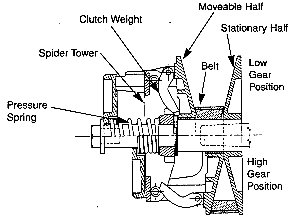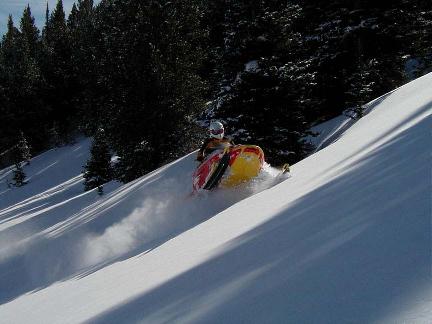
Image taken from The Gates Rubber Company
http://www.gates.com/
http://www.gates.com/
- In common terms, the primary clutch operates by centrifugal force. However, in physics, centrifugal force is known as a "fake force." I'll get to that more later in the physics page . For the purposes of explaining how the clutch works, I will use the term "centrifugal force" because most everyone can widely relate to that term.
- The primary is made up of two "sheaves" (clutch halves), one that is moveable, and one that is stationary. If you watch the movie on the previous page , you will see that there is only one moveable sheave on each clutch. Also note that the moveable sheave on the primary is on the left but on the secondary it's on the right. This is so that as the clutches move, the belt does not get cocked.
- There are flyweights (called "clutch weight" on the diagram above) mounted in the moveable sheave of the primary that move outwards as the engine rpm increases. These push against stationary (relative to the flyweights) pins and overcome the force of the spring moving the moveable sheave closer to the stationary sheave.
- You'll notice in the diagrams and pictures that the sheaves and the belt have an angle on them. This is so that when the sheaves are pushed together the belt is able to move outwards to a larger radius. The above diagram does a good job of showing where the belt is in high "gear" (bottom half of diagram) and low "gear" (top half).

Image taken from http://www.snowest.com/